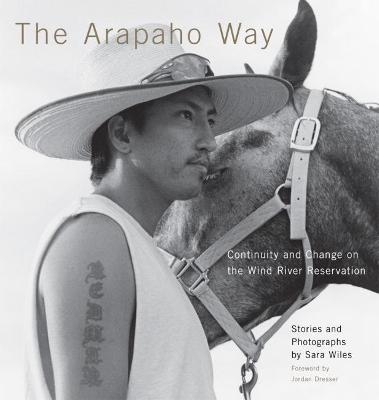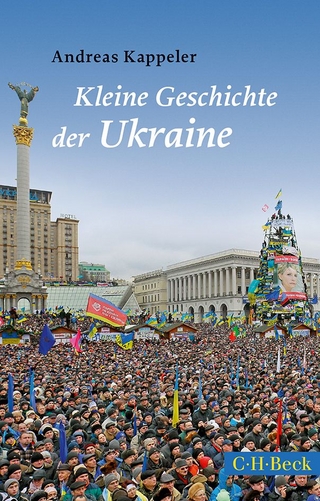
The Arapaho Way
Continuity and Change on the Wind River Reservation
Seiten
2019
University of Oklahoma Press (Verlag)
978-0-8061-6290-4 (ISBN)
University of Oklahoma Press (Verlag)
978-0-8061-6290-4 (ISBN)
Wiles returns to Wyoming's Wind River Indian Reservation, whose people she so gracefully portrayed in words and photographs in Arapaho Journeys. She continues her journey of discovery here, photographing the lives of contemporary Northern Arapaho people and listening to their stories that map the many roads to being Arapaho.
The sun, the moon, the seasons, our Arapaho way of life,"" writes foreworder Jordan Dresser. ""When you look around, you see circles everywhere. And that includes the lens Sara Wiles uses to capture these intimate moments of our Arapaho journeys.""
In The Arapaho Way, Wiles returns to Wyoming's Wind River Indian Reservation, whose people she so gracefully portrayed in words and photographs in Arapaho Journeys (2011). She continues her journey of discovery here, photographing the lives of contemporary Northern Arapaho people and listening to their stories that map the many roads to being Arapaho. In more than 100 pictures, taken over the course of thirty-five years, and Wiles's accompanying essays, the history of individuals and their culture unfold, revealing a continuity, as well as breaks in the circle.
Mixing traditional ways with new ideas - Catholicism, ranching, cowboying, school learning, activism, quilting, beadwork, teaching, family life - the people of Wind River open a rich world to Wiles and her readers. These are people like Helen Cedartree, who artfully combines Arapaho ways with the teaching of the mission boarding schools she once attended; like the Underwood family, who live off the land as gardeners and farmers and value family and hard work above everything; and like Ryan Gambler and Fred Armajo, whose love of horses and ranching keep them close to home. And there are others who have ventured into the non-Indian world, people like James Large, who brings home tenets of Indian activism learned in Denver.
There are also, inevitably, visions of violence and loss as The Arapaho Way depicts the full life of the Wind River Indian Reservation, from the traditional wisdom of the elder to the most forward-looking youth, from the outer reaches of an ancient culture to the last-minute challenges of an ever-changing world.
The sun, the moon, the seasons, our Arapaho way of life,"" writes foreworder Jordan Dresser. ""When you look around, you see circles everywhere. And that includes the lens Sara Wiles uses to capture these intimate moments of our Arapaho journeys.""
In The Arapaho Way, Wiles returns to Wyoming's Wind River Indian Reservation, whose people she so gracefully portrayed in words and photographs in Arapaho Journeys (2011). She continues her journey of discovery here, photographing the lives of contemporary Northern Arapaho people and listening to their stories that map the many roads to being Arapaho. In more than 100 pictures, taken over the course of thirty-five years, and Wiles's accompanying essays, the history of individuals and their culture unfold, revealing a continuity, as well as breaks in the circle.
Mixing traditional ways with new ideas - Catholicism, ranching, cowboying, school learning, activism, quilting, beadwork, teaching, family life - the people of Wind River open a rich world to Wiles and her readers. These are people like Helen Cedartree, who artfully combines Arapaho ways with the teaching of the mission boarding schools she once attended; like the Underwood family, who live off the land as gardeners and farmers and value family and hard work above everything; and like Ryan Gambler and Fred Armajo, whose love of horses and ranching keep them close to home. And there are others who have ventured into the non-Indian world, people like James Large, who brings home tenets of Indian activism learned in Denver.
There are also, inevitably, visions of violence and loss as The Arapaho Way depicts the full life of the Wind River Indian Reservation, from the traditional wisdom of the elder to the most forward-looking youth, from the outer reaches of an ancient culture to the last-minute challenges of an ever-changing world.
Sara Wiles is an independent photographer, writer, and scholar who holds a master's degree in anthropology from Indiana University. Her photographs, including the images published here for the first time, have been exhibited nationally. Jordan Dresser (Northern Arapaho) is a journalist, filmmaker, curator, and repatriation specialist living on the Wind River Indian Reservation. He is coproducer of the award-winning feature documentary What Was Ours.
| Erscheinungsdatum | 11.10.2019 |
|---|---|
| Vorwort | Jordan Dresser |
| Zusatzinfo | 125 duotones, 1 map |
| Verlagsort | Oklahoma |
| Sprache | englisch |
| Maße | 241 x 229 mm |
| Gewicht | 1361 g |
| Themenwelt | Kunst / Musik / Theater ► Fotokunst |
| Sachbuch/Ratgeber ► Geschichte / Politik ► Regional- / Landesgeschichte | |
| Reisen ► Bildbände ► Nord- / Mittelamerika | |
| Geisteswissenschaften ► Geschichte ► Regional- / Ländergeschichte | |
| Sozialwissenschaften ► Ethnologie | |
| Sozialwissenschaften ► Soziologie | |
| ISBN-10 | 0-8061-6290-2 / 0806162902 |
| ISBN-13 | 978-0-8061-6290-4 / 9780806162904 |
| Zustand | Neuware |
| Haben Sie eine Frage zum Produkt? |
Mehr entdecken
aus dem Bereich
aus dem Bereich
von der osmanischen Eroberung bis zur Gründung des Staates Israel
Buch | Softcover (2023)
C.H.Beck (Verlag)
CHF 26,50
von der Staatsgründung bis zur Gegenwart
Buch | Softcover (2023)
C.H.Beck (Verlag)
CHF 16,80


